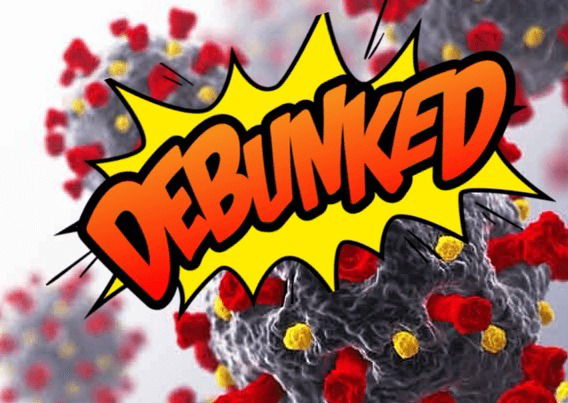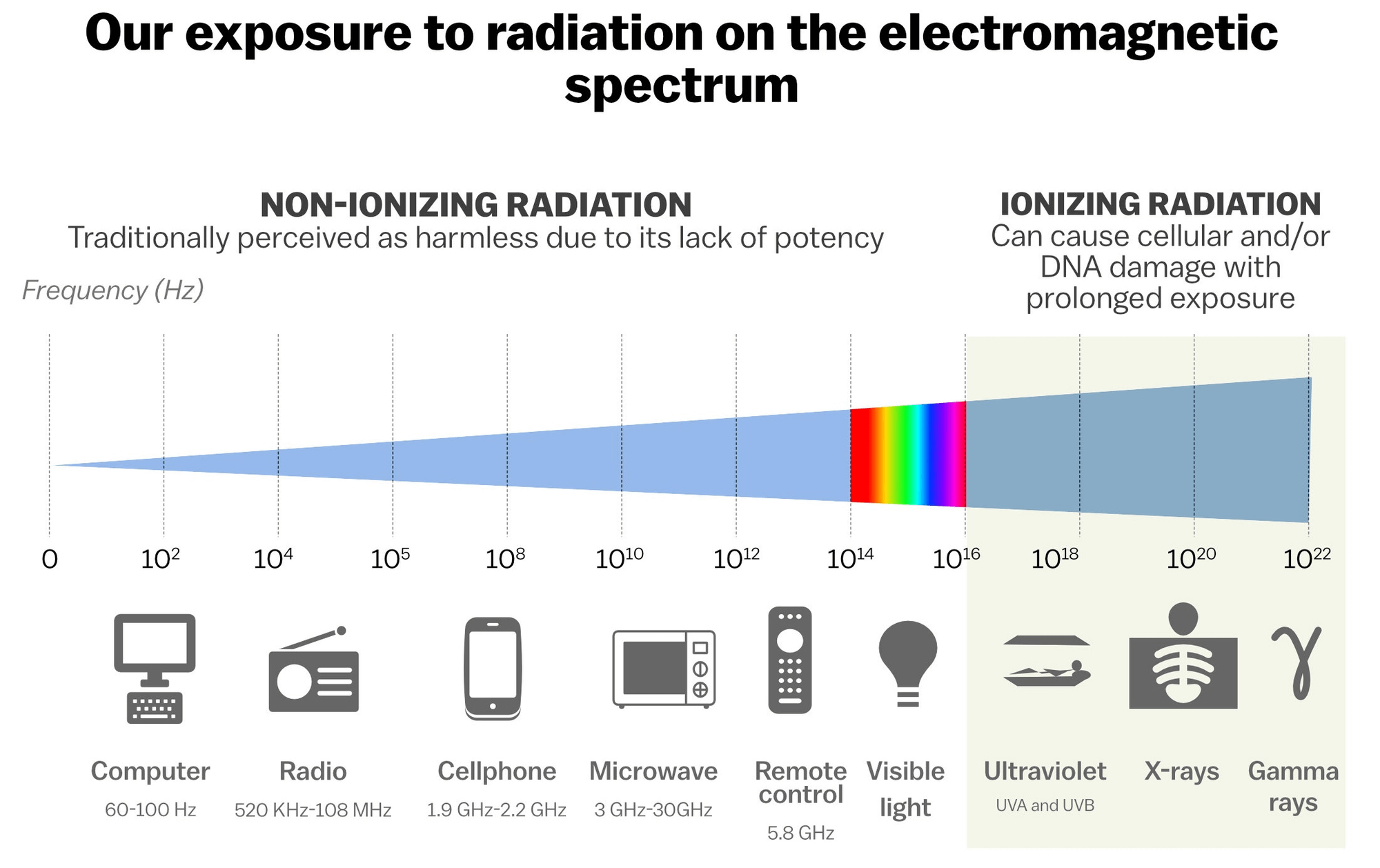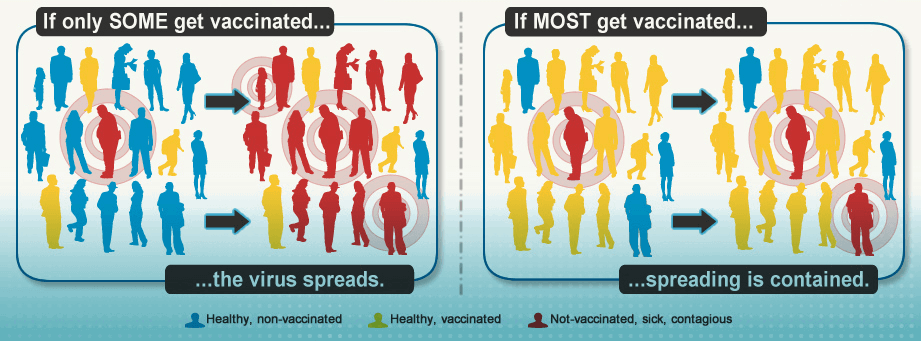Coronavirus: Myths and Legends

By Lucas Rudden
This article is aimed more at the older students (and parents!)
A key scientific skill is the ability to critically think about anything you might read or hear about. Never take anything for face value and take some time to consider if it's backed up with significant, compelling evidence. Whenever you read something on social media, the news, hear something on the radio etc. always try to consider: where is this coming from (is it a trustworthy source) and does it make scientific sense? Critical thinking is one of our most powerful weapons in the war against fake news.
Never have these skills been more important than right now, with coronavirus fake news invading our daily lives with potentially deadly consequences. Here we'll go through a few of the most common coronavirus myths, and hopefully you'll pick up something along the way!
1) Pets can transfer the coronavirus
Back at the beginning of March it was reported that a dog in Hong Kong had become infected with the virus. This South China Morning Post article states that results showed that the dog was 'weakly positive', in other words, it had traces of the virus on its fur, nose and mouth. Its owner was confirmed to have been infected. The owner and their dog. Source: FacebookNo blood tests were performed to see whether the dog was actually infected. So, lets use those skills we discussed above to see whether this is true or not.
The owner and their dog. Source: FacebookNo blood tests were performed to see whether the dog was actually infected. So, lets use those skills we discussed above to see whether this is true or not.
a) Is there significant evidence - i.e. is there other evidence of transmission? Currently, no, there is no other evidence that transmission between human and pets is occurring. A quick google to the WHO website can prove this to you. There were reports back in 2003 that SARS (a similar virus) did transfer to cats and dogs but this was few and far between, furthermore those animals displayed no symptoms and there was no evidence of transmission back to humans.
b) Where is this coming from? This story was reported in several articles around the world. Originally though, the statement was made by the Hong Kong Health authorities, so on this occasion, yes this source seems trustworthy.
c) Does it make scientific sense? There are several factors to consider here, but we'll mention just the main one. In order for the virus to jump from one species to another in needs to mutate. This was what happened originally, the virus jumped from bats to humans and spread from there. While mutations are not necessarily rare, 'successful' mutations are.
If we ignore the fact that the virus was located in regions on the dog the owner was likely in contact with and instead accept it was definitely infected, in order for that virus to now grow it needs more hosts. That means this dog needs to be in contact with other dogs. Since this is down to humans (dogs don't yet have their own independent airline!) there is little to no chance it could grow in the same manner, particularly while much of the globe is in lockdown. Furthermore, if the virus is now infectious to this dog, it is unlikely to still be infectious to humans - meaning it can't transmit back.
In short, while there is a finite possibility - it is extremely unlikely that pets can transfer this, it can survive on their fur, much like it can on a table or door handle, but in terms of being infectious all the evidence points to this being a myth.
Editors note: Since this was written, a tiger at Bronx Zoo has tested positive for the virus (and displays all the classic symptoms). Putting aside how unusual it is that the tiger has exactly the same symptoms as humans, there is no evidence that this virus can now "jump back" to humans.
2) The coronavirus is less deadly than the flu
You'll often see stats quoted like this: "30000 people die from the flu each year, but only 4000 people have died from the coronavirus! How is Covid-19 worse than the flu?!" (USA CDC numbers). When the numbers are said like that, it's easy to see why people might think this isn't anywhere near as bad as the flu.
Sadly, this is a classic case of misrepresentation. Let's just jump straight to the scientific sense side here since this isn't a story coming from one place.
30000 people die from flu each year on average across the entire year. 4000 people have died (in the US) so far. That's since the start of February. If 4000 people die in the USA each month, that's 48000 people, more than the flu. But this isn't true either, the numbers are growing exponentially. For more information about exponentials, please take a look at this fantastic video by 3blue1brown.
The concept of the exponential is hard for us humans to wrap our heads around. I like the tale of the old Indian chessboard best, where a humble peasant brings his king the game of chess to ease his boredom. In return, the king offers any reward - the peasant, understanding the exponential, asks for a single grain of wheat on one corner of his board, doubling as you move through successive squares. The king foolishly accepts, and is horrified to learn that by the last square he owes this cunning man 18,446,744,073,709,551,615 grains of wheat, or 1,645 times the global wheat production in 2019.
 Grains of wheat grow exponentially on a chess board
Grains of wheat grow exponentially on a chess board
The virus cannot spread like the wheat on the chess board as there is a hard limit with the number of people on Earth, not to mention all the lockdown measures put in place severely limiting it's growth. But you can still see how this growth can manifest into much larger numbers very quickly. There are numerous factors that impact a virus' ''deadliness", such as the quality of healthcare, age, underlying conditions etc. WHO estimates the mortality rate to be between 0.6% - 3.4%, the huge range arises due to the number of asymptomatic and non-tested coronavirus infected patients confusing the numbers, not to mention the disparity in testing between different nations.
Suffice to say, this rate is much higher the flu rate of 0.1%. Taking the lower end of that estimate, that means for every 1000 people infected, 1 person will die of the flu while 6 will die of the coronavirus. This is why social distancing is so important, we need to protect the people in the higher risk groups.
3) Coronavirus is "spread" or "activated" by 5G networks
On the 4th of April, a telephone mast was set on fire amid current rumours that the new 5G network (a faster way for our phones to access the internet) was somehow causing or spreading the coronavirus. This is a difficult one to unpack here, as there are a lot of conspiracies circulating and a lot of misinformation. Let's use those critical thinking skills again:
a) Is there significant evidence? In short, no. A quick google will give you a lot of articles debunking this myth.
b) Where is this coming from? The post originated from this facebook post back in January. Since then, and particularity towards the end of March, this myth has been quoted and warped again and again across social media. You are first likely to see it in the comments section of a Facebook post. I cannot emphasise enough that these are not reliable sources, even if they are stating something you agree with.
In particular, you should be careful about people who comment suspicious facts, anecdotal or otherwise, without any evidence or background. For example: "Lots of experts think that the Coronavirus can only work in a 5G area!" This is a throwaway statement, usually used to belittle someone else who might have said the opposite. It is likely they don't actually know any experts who've said that, but that doesn't support their argument. If all you can find are sources from social media, conspiracy websites or disgraced doctors, it is likely not true.
c) Does it make scientific sense? We already have an article discussing what Coronavirus is (see Coronavirus Discussion on the Materials from our Calls board), so please take a look at that too! In short, a virus is like a little machine that attaches to a cell in our body and injects genetic material into it. That material then takes over the machinery in your cell, hijacking it's operation for it's own nefarious purposes (though please don't think that virus' are 'alive', they are not). After a while, more replicated virus' appear on the cells surface to then spread further through the body.
5G refers to the 5th generation of wireless communication technology we use to access the internet on our phones. One of the main differences between it and the previous iteration, 4G, is that the electromagnetic waves it uses to communicate have a much higher frequency. Electromagnetic waves are a bit like waves from water, except instead of water moving it's light. X-rays, the light your eyes use to see (called visible waves), microwaves, radio and 5G all use electromagnetic waves to communicate and work. They all have different frequencies, with 5G having a higher frequency than microwaves, but much smaller than light and much much smaller than X-rays! 5G actually operates on the same frequencies as the radar police use to check how fast you're going, and there has been no evidence of harm in them!
 EM spectrum - 5G frequency lies between remote control and visible light
EM spectrum - 5G frequency lies between remote control and visible light
Higher frequencies let us transfer more information in the same amount of space, hence why 5G is so blazingly fast vs 4G (think Netflix 4K streaming vs 720p on YouTube). This also means we need newer masts, and more of them since the waves cannot travel as far. This is the next generation in the technology of communication.
There is no linking mechanism between how 5G operates and how virus' work. There is some scientific work that has looked into how bacteria can act as antenna for EM waves, but they were looking at a frequency range in the kHz, and at bacteria which are a completely different kettle of fish from a virus. It's like saying that if we can teach a dog to fetch a stick, we can also teach an ant to do your homework. Furthermore, virus' have been around and have been far deadlier throughout human history (the Antonine plague that devastated the Roman Empire is speculated to have been a virus), 5G technology has existed for a year. Finally, the virus is spreading in many countries worldwide that don't have any mobile wireless networks, let alone 5G. There is no way the two are linked.
In short, if your second cousin (other family members are available) makes a post or comment on Facebook saying something you think sounds a bit ridiculous, she has no scientific background, you cannot find any information backing it up, and scientifically you cannot think about how it would work, it is probably fake news.
4) A vaccine will be as ineffective against coronavirus as it is the flu
The CDC reports that flu vaccines are only effective in 40% - 60% of cases. Even if the effectiveness was the same between the coronavirus as the flu, that's still a lot of people who will be protected! However, this is forgetting that the influenza virus and coronavirus are fundamentally different. In this instance, of particular interest is their respective mutation rates.
The influenza virus mutates very quickly - the reason you need a new vaccine every year is because the virus has mutated so fast the vaccine from the last year is no longer effective! You have no protection against the new strain.
Smallpox was also a virus (albeit very different from the current ones). The older generation will remember it's eradication back in the late 1970s, arguably one of humanities greatest accomplishments of the 20th century. In fact, there's evidence of inoculation attempts all the way back to 1500s China during the Ming dynasty! While smallpox is likely to have changed in 500 years, it was in general quite a 'stable' virus in that it did not mutate very often. This meant that if you designed a vaccine it would still be effect several years later, the first vaccines in fact being developed in the 1800s. With enough people vaccinated, you no longer have to worry about it's spread, as one infected person can be 'isolated' by vaccinated people.
 Vaccination helps protect the most vulnerable.
Vaccination helps protect the most vulnerable.
Coronavirus also has a far smaller rate of mutation than influenza, primarily because it has a gene it needs in order to produce the material to penetrate our cells. Mutations occur on a molecular level, where one of the important molecules (called nucleotides) that make up the virus change into something else. In the vast majority of cases, this does nothing to the virus' job, in the minority of cases this actually negatively impacts it's effectiveness. In a very very small minority of cases, it will make the virus worse. Here again though, we have to consider what worse is. If the virus is deadlier, it is more likely to kill the host before transmission. Equally if it is less deadly it might be able to spread more but isn't as damaging. Therefore, that tiny, unlikely mutation must also have the correct balance of deadliness and infectiousness. The probability of this is extremely small.
Since the mutation rate is so small, and it is very unlikely to mutate into anything nastier, a vaccine designed to fight it will be far more effective than any influenza vaccine. This article goes into a little more detail.
As a final note, it's not just virus' that we've been working to eradicate. The Guinea Worm (a parasite) is likely to be the second human disease to be eradicated thanks to efforts by the Carter Center.
5) Tests for Coronavirus can also pick up strains of flu and common cold or other strains of the Coronavirus
A question was posed in the comment section below:
Is it true we are testing only for coronaviruses, not for covid 19 specifically, therefore the figures may include strains of the flu and common cold, and possibly other coronaviruses ?
This is an excellent question. I've not seen it personally across social media, but I can certainly see how it might raise questions about the validity of our current figures, potentially inducing some panic. This requires a little more scientific background to disprove though, which means it is a little bit more challenging to address - but here we go.
Currently the main tests used to see if a patient is currently infected with the virus use genetic tests. The protocol is slightly different between different countries, notably the US declined the tried and tested method promoted by WHO to develop their own, but the objective is more or less the same.
In January, Scientists in China published the genome of the Coronavirus SARS-CoV-2 genome, the genome of Coronavirus as we know it. The genome is the material a virus uses to replicate itself, and is a unique genetic fingerprint that points specifically to that virus. After a swab of bodily fluid is taken from a patient (e.g. spit), scientists can then target that specific genome they know codes for the Coronavirus and attempt to replicate it. After the sample is filled with the virus, those Scientists can then add some markers that essentially "light up" under a microscope if they're attached to anything. So if a patient does not have Covid-19 (the name of the disease caused by Coronavirus), that sample won't light up at all!
It's a little more complicated than that of course, and there are additional steps involved too. If you're interested in a more through explanation please take a look at this article in Wired. Since the genome is unique to that strain of the Coronavirus, the test won't pick up any other virus' - i.e. the flu or colds. If they wanted to though, those scientists testing could add markers for something like influenza into the test. Then, when the results came back they might "light up" blue if you have Coronavirus, or red if you have influenza. It is worth noting though, that the test for influenza is only 50-70% accurate due to the number of strains, whereas our current tests for Coronavirus should be 100%.
The same is also true for other strains of the Coronavirus. Coronavirus is a family of virus', the word corona is used to identify them because of the characteristic crown structure that comes with the virus (corona is crown in latin). We just use the general classification because it's convenient, technically we should say Coronavirus SARS-CoV-2 when referring to the virus. In the cases of these other Coronavirus, if the genome is suitably different (e.g. in the case of the 2003 SARS or 2012 MERS), then it won't be picked up by our tests. It is worth noting as well, that these other versions of Coronavirus have long been eradicated (in human populations) by actions taken at the time.
Finally, these tests work for patients who are currently infected with the virus, not for those who are recovered. For that, we need an antibody test, which is fundamentally different, and easier/cheaper to roll out.